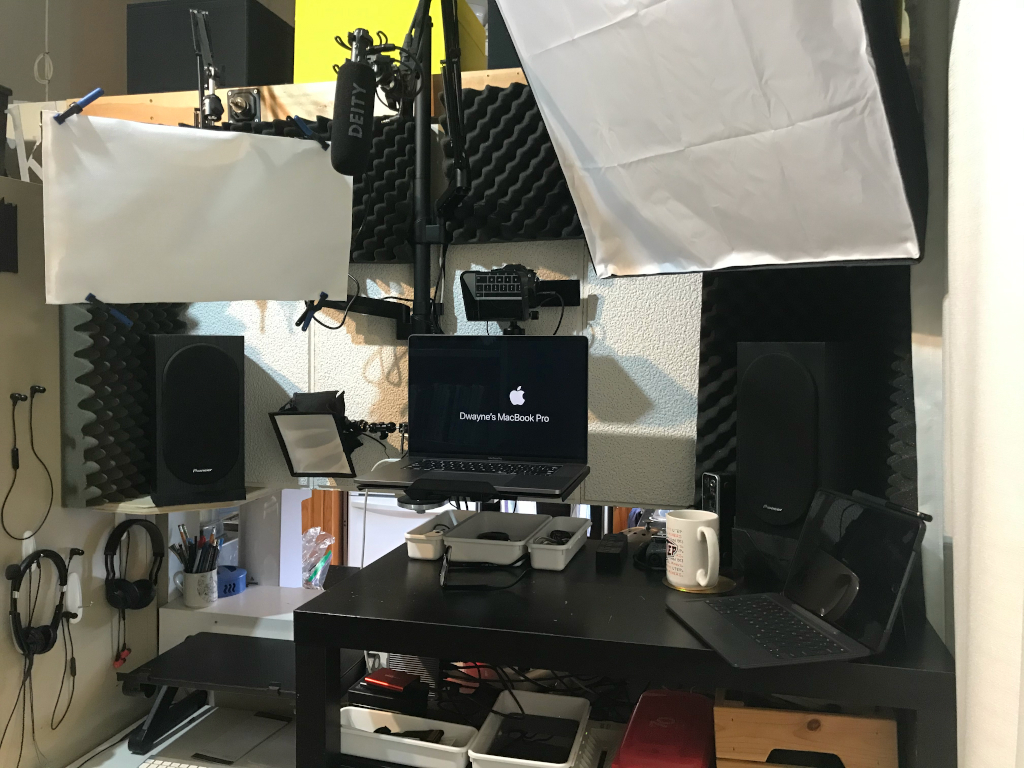To Script or Not To Script…
The more instructional videos that I make the more I have learned to rely on scripts to ensure that I am conveying an effective message. I now use a script for the following:
- 2-3 minute or less introduction, promotion, bridge video,
- 4-10 minute overview, contextual, foundational, tips, video
- 10-18 minute informational, TED Talk style of video
To estimate the time of my script I will often refer to the Voice Over Script Word Counter at thevoicerealm.com
Even in my long-form discussions I still work on an outline with my collaborator so there is some form of guide or script. When I create a Tips or Tutorial video and I use a tool like screencast-o-matic to insert my talking head into the video on the bottom corner of the screen, I will use the slide deck, website, article, document, or other resources I am explaining as the script. I also plan out what the key points will and what parts of the resources I will highlight.
The only time I don’t script is when I create the 2-8 minute feedforward videos I create for my students when I am giving them educative or formative assessment. But even in this context, I have a format that I follow so while I am conversational in my feedforward I still have a specific structure or a very loose script.
While I have spent most of my emphasis on why I script I cannot ignore why scripting, narrating, or as I like to say telling a good story can be powerful and transformational. I have been exploring these ideas for several years and the following posts have the potential to take you down quite the rabbit trail. Don’t worry it is a worthwhile journey:
- Want To Change the World – Tell a Good Story
- Power of Story
- Video – Short and Simple is More Engaging
- The Human Mind is a Story Processor, Not a Logic Processor
- Video Vision Casting in Transformative Scenario Planning
- How to Use The Power of Video
- Power of video & sound
- Apply to Goucher College Using Video
Teleprompter
Since I use a script for most videos I also use a teleprompter. Finding the right teleprompter has been a bit of a journey. When first started to formalize my video creation process I used my whole living room as my studio and I used a DIY teleprompter and either a full-sized Android tablet to project my scripts.
This worked great but, the space needed, the setup (20-30) and take downtime (15-20) and the need for an assistant to run the camera and teleprompter limited my options. As the need to create more videos increased I shifted to more of a permanent setup in my small office space.
I experimented with a web-based teleprompter CuePrompter. Even after positioning the script directly below my camera I still found that it looked like I was reading because my eyes were not directly focused on the lens of the camera. After researching several lens mounted options I have been using the Parrot Teleprompter from Padcaster.
At $100 US or $175 CDN it is a reasonably priced solution that is very simple to set up. You just screw on a mounting bracket to your lens and the teleprompter slides into place. You slide the iPhone into the bottom shelf and you are ready to go in less than a minute.
The plastic teleprompter that mounts on your DSLR lens is great but when you combine it with a voice-activated app that will track your voice and scroll your text as you talk you are at a whole other level of productivity. the SmartPrompt Pro app that I am currently using enables me to stop and start and control the teleprompter as I go through my narration
Because my camera is so close I can reach out and simply scroll the teleprompter script back to the section I want to re-shoot and restart the teleprompter. This lens-mounted teleprompter is one of the last pieces to my video production setup that I wish I would have explored sooner. This is one of many pieces to the video production puzzle that I have been working on over the past few years. While have finally gotten to the point where I can be up and running in just a few minutes there are still many areas of improvement that I am continuing to explore.
Please refer to my DIY Video setup posts for more details on the audio and lighting considerations.
Also, remember that my office setup is very compressed so the limited space that I have to work in is a very important consideration. If you have more space you will have many more options. If you are like many people dealing with the COVID pandemic of 2020/2021 you may be working from home so your space or lack of space will also be a consideration.
Regardless of your situation, I trust these ideas that I have shared will help you become more efficient and effective at creating videos for your instructional setting.
Recommendations:
Voice Over Script Word Counter at thevoicerealm.com
Parrot Teleprompter from Padcaster
SmartPrompt Pro
Dwayne’s DIY Video Setup series:
Dwayne’s DIY Video Setup – Part 5 Audio & Lighting Update
Dwayne’s DIY Video Setup – Part 4 Audio
Dwayne’s DIY Video Setup – Part 3 LED Lighting Update
Dwayne’s DIY Video Setup – Part 2 Lighting & Background
Dwayne’s DIY Video Setup – Part 1 Teleprompter & Tripod
Dwayne’s DIY Video Creation Toolbox
My Video & Media Tools















































